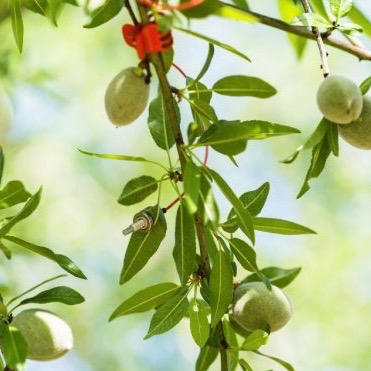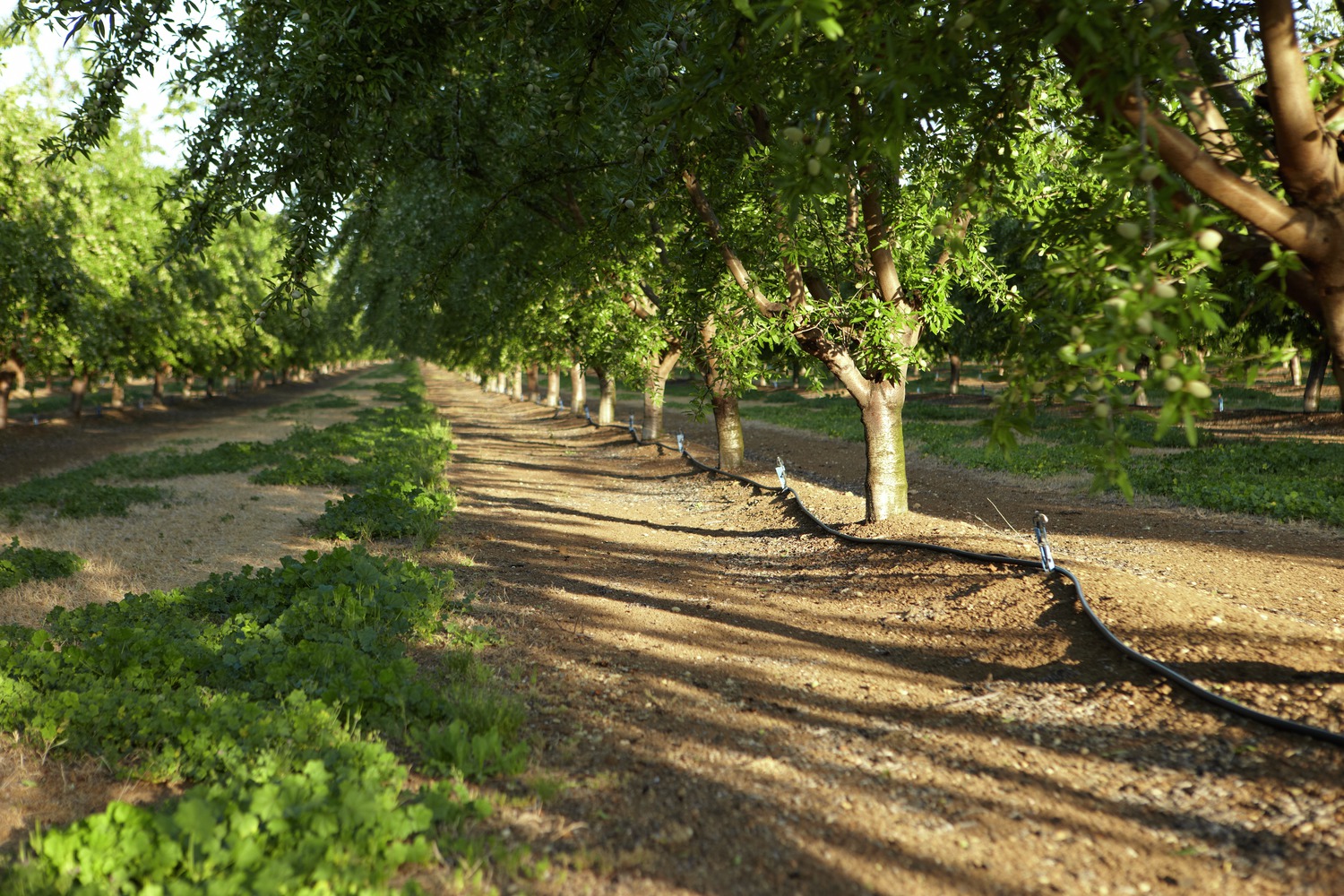The California almond community is committed to the responsible and efficient use of water. Improvements in production practices and water-saving technologies have helped almond farmers reduce the amount of water it takes to grow a pound of almonds by 33 percent over the past 20 years.1
Decades of Almond Board-funded water research and innovation has led to impactful on-farm improvements, including the use of water saving microirrigation in nearly 80 percent of almond farms2 and the exploration of how California’s almond orchards and groundwater recharge can be leveraged to replenish underground aquifers.
These historic changes and ongoing research are certainly impactful, but there’s always room for continued improvement. From guidelines on integrating research based-practices across each farm’s irrigation management to new technology in development, growing more with less remains a core value for the California almond community.
One emerging tech area relies on real-time data collected directly from the almond trees, often remotely. Technology like the on-leaf water sensors made by Yara International and the precision irrigation leaf monitoring system being researched by UC Davis researcher-engineer Shrini Upadhyaya can provide accurate and precise information to almond farmers on the specific water needs of their trees.
How do these technologies work?
 The Yara on-leaf sensor collects information from magnetic leaf clamps that are wired to the sending units fastened to the tree. The clamps measure turgor (rigidity due to absorption of fluid) pressure to provide information on when and where water is needed in the orchard.
The Yara on-leaf sensor collects information from magnetic leaf clamps that are wired to the sending units fastened to the tree. The clamps measure turgor (rigidity due to absorption of fluid) pressure to provide information on when and where water is needed in the orchard.
“It’s really to optimize the use of water so that you get more crop per drop driving again that profitability for the farmer in a sustainable way,” said Terje Knutsen, Executive Vice President of Crop Nutrition for Yara International.
The continuous leaf monitors Upadhyaya is experimenting with are part of a wireless mesh network of sensors that monitor soil and plant water needs, and controllers that implement precision irrigation across the orchard. The system determines water needs through a system that measures leaf temperature, ambient temperature, relative humidity, incident solar radiation, and wind speed.
“We are looking at precision irrigation based on plant water status as an opportunity to save water,” Upadhyaya explained.

To continue to support almond farmers in growing more crop per drop, Almond Board of California (ABC) is investing in irrigation research, like Upadhyaya’s — both to better understand and refine the basics that support grower day-to-day needs, and to provide a platform for creative, cutting-edge solutions. This year alone, ABC supported 14 research projects focused on water with an investment of $1.2 million.
For the latest on almonds and water, click here.